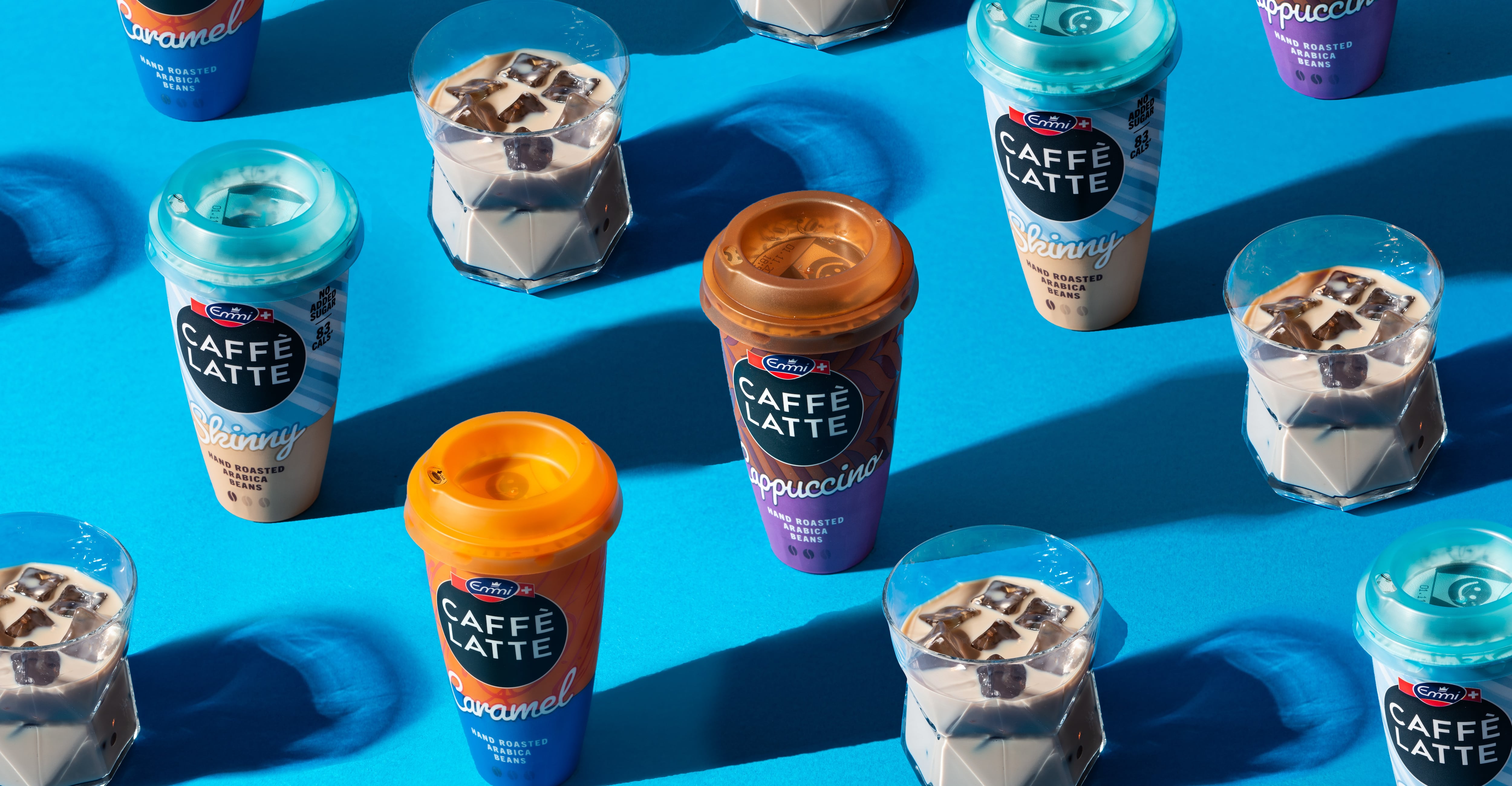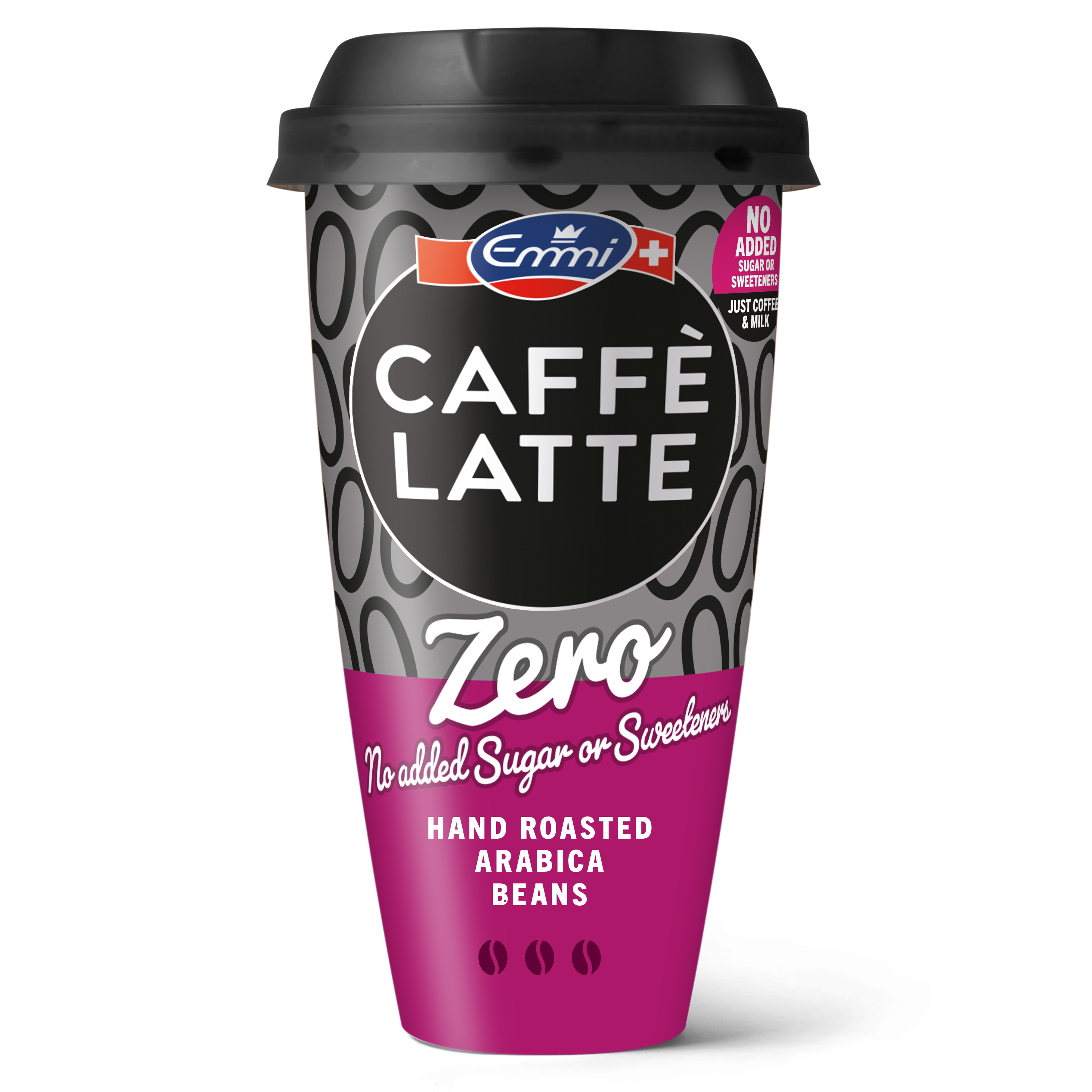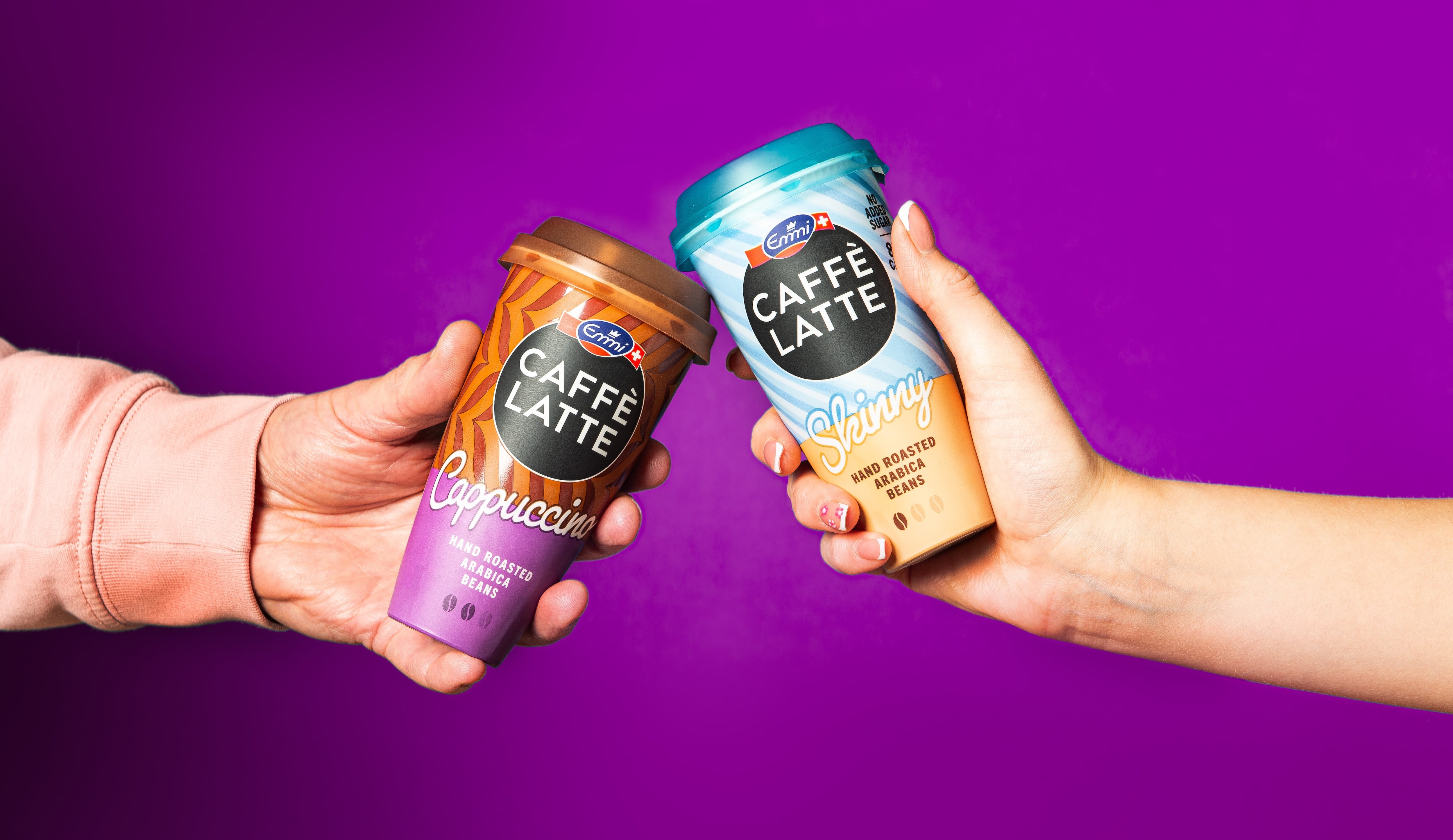Emmi Group’s Caffe Latte turned 20 last year, but you’d be forgiven if you had missed it. A mainstay in its core Swiss market and a market leader in Austria and Spain, the brand is the second largest RTD coffee player in the UK, Belgium and Germany.
The Swiss brand was the first of its kind to launch in Europe in 2004, but various factors – including the category’s historically low consumer penetration rate – has meant growth had been limited. In the UK market, which remains nascent compared to the likes of Japan or North America, securing space in the on-the-go-aisles has been pivotal for the brand’s growth in recent years.
Should you invest in RTD coffee?
RTD coffee products are mostly milk-based (around 80% milk), making the category of particular interest to dairy producers seeking to launch a new value-added proposition.
According to Statista, the global RTD coffee market is set to generate $37bn in 2025, with most sales ($36.41bn) in the at-home segment (e.g. supermarkets and convenience stores). In the years to 2029, at-home sales are projected to increase at a CAGR of 3.50%.
In the UK, chilled RTD coffee is worth more than £323m and grew in both value (4.2%) and volume (4.5%) in 2024, according to Nielsen. Meanwhile, Kantar data shows that more than a quarter of UK households were purchasing RTD coffee at the end of 2024; and occasions where ice coffee was consumed grew 66% in the past two years.
Use occasions are also not tied to a particular season anymore. While hot coffee drinks are still purchased more frequently in winter, cold coffee remains popular too, with around 16% of yesterday’s cups were served cold or iced, according to the US National Coffee Association.
In terms of purchasing drivers, value is what draws shoppers the most to the category, followed by demand for quality and brands, according to market intelligence agency Lumina.
And in formats, multi-serve is the fastest-growing subcategory, thanks to growth in demand for take-home drinks.
Trend-spotting: From decaf to cookies and cream
Emmi Caffe Latte has a 70% share of its home Swiss market. How does the brand balance the needs of regional and global consumers?
“Swiss consumers don’t differ so much from the rest of the world,” opened Emmi Caffe Latte’s global marketing manager, Stephanie Herpers. “We do spot trends mainly outside of Europe, so we look a lot at both Asia as well as America. And trends arrive a bit quicker in the UK before they arrive in Switzerland, so we also have a focus point on that [market].”

In recent times, the RTD coffee brand has majored on health-focused, low-sugar options while also addressing demand for natural ingredients.
“We were first to the market with our high-protein coffee proposition,” head of marketing, UK, John Mulvey told us. “Obviously [that’s] now more widely available with other brands. If you look at our health propositions in the UK, we’ve just really launched our Zero proposition, no sugar, no artificial sweeteners; and generally we’re trying to drive the proposition to be more natural. Sugar reduction is another key health priority for us, so across different pillars, we’re able to remove barriers for new consumers to experience in the coffee space.”

And in Spain, the brand launched a decaf, milk-free option, which is now being introduced in Switzerland. “Decaf got more and more established over the last few years,” Herpers told us. “It used to be associated with health concerns but nowadays, you could drink a normal coffee in the morning and decaf in the afternoon, so more people are looking at that option.”
Mulvey added: “In the UK, we’re ready to go [to market] with that and that does answer a unique need. In take-home coffee in the UK, 11% of it is decaf. Currently, there’s no decaf proposition on the [RTD] market, but there’s only a certain limited amount of space available on the fixture for ready-to-drink iced coffee.”
Meanwhile, a plant-based, dairy-free option to cater for vegan and flexitarian consumers has also been introduced. The base is a soy and oat blend for taste, nutritional and textural reasons.
Speaking of taste, how does one attract consumers that don’t like the coffee flavor? This is where limited-edition offerings come into play, such as the cookies and cream option launched with Gen Z consumers in mind.
“That was a bit of a test and learn where we went completely after the younger generation,” Herpers said. “[The focus was] on removing the barrier that the coffee taste poses.”
RTD coffee as permissible indulgence
But while flavors can help ignite excitement in the category, it’s the traditional options that sell the most.
“We’ve learned that consumers see ready-to-drink iced coffee itself as the treat so that doesn’t necessarily need to replicate a dessert flavor that you might find in a coffee shop, for example,” Mulvey said. “That’s replicated in terms of sales in the category. Traditional styles – cappuccino, latte – make up over 80% of the sales in the category. Whereas the flavors – unique kind of seasonal style and dessert flavors –represent a very small part of the overall proposition.”
This is also why treading the line between health and indulgence can be tricky.
“Health is a macro trend and anyone who works in FMCG has got that in the forefront of mind,” Herpers said. “Our research has shown that consumers are looking for products which help them achieve their health goals – so whether they see [RTD coffee] as a treat or not, consumers are looking for products that have a sensible amount of sugar and fat, and any of the kind of macro nutrients inside them.”
The way forward? “Offering products that are as natural as possible, with as low sugar as possible, without compromising on the overall quality and taste experience of the product.”
Boosting category growth: Usage occasions and formats
Trying to build up a category with low consumer penetration remains a key priority, particularly in less developed RTD coffee markets such as the UK.
“The penetration of the market in the UK is less than 30%,” Mulvey told us. “So actually, that category challenge is something that all the players in the market share. What we do is try and define the category entry points where we feel or know consumers are looking for a specific solution and to satisfy specific need.
“And to do that, we need to work with our retail partners. So having a very clear understanding how consumers are using iced coffee – what times of day they’re using it, when and what they’re having it with, where they are; understanding that is really helping us inform category decisions.”
From bean to single-serve cup
A key USP for the Swiss beverage brand is its use of freshly-brewed espresso – made from Rainforest Alliance Certified beans purchased as single origin – Swiss milk, and no artificial additives.
Last year, Emmi Group acquired Hochstrasser, a Lucerne-based coffee roaster and long-term Caffe Latte supplier, to boost production synergies.
One strategy that has helped the brand’s growth has been to bring on-the-go products out of the dairy and chilled beverages and into the impulse shelves, e.g. Meal Deal fridges.
“We were one of the most impulse-led categories with the least impulse shelf space, originally,” Herpers said. “Bringing our products front-of-shelf like the team has done in the UK has been really good to remove barriers to adoption.”
Convenience – checked. But what of usage occasions?
“There are definitely peak moments that are probably comparable to hot coffee,” Mulvey explained. “You have an early morning [peak] and then you have an afternoon peak, even though we see that RTD can be consumed throughout the day as well as.
“What you might assume is that there’s a lot of seasonality in well-established markets like Switzerland,” he added. “But you see that sales don’t necessarily drop when it’s raining outside – so throughout the year, throughout every moment of the day, RTD coffee can play a relevant role.”
But there’s still ‘a very big job to be done’ in the short term of getting people to transfer their usage from coffee-shop coffee to shop-bought iced coffee, he told us. “The category is so young and potentially and so small in terms of its penetration that actually just getting people to pick up more ready-to-drink iced coffee is what the challenge is.”
Formats too can play a key role in growing the category, as demand for formats such as multi-serve is yet to peak. “We saw that that grew quite quickly a couple of years ago,” Mulvey said. “That’s very much plateaued in the last 12-month read of data, and actually, we’ve driven much more growth by doing more front-of-store, single-serve options.
“We do have a take-home proposition in a 650ml sharing format, and we do continue to invest in that back of store, take-home occasion, but we also know that that’s a longer-term plan which needs to have time to grow alongside the penetration of the category.”
Looking ahead, Emmi Group is set to push its RTD coffee brand even further in front of consumers, through advertising and presence at summer festivals. “We’ve got some exciting global campaign which will come in 2026, including moving to larger-format media types like TV,” Mulvey concluded.

